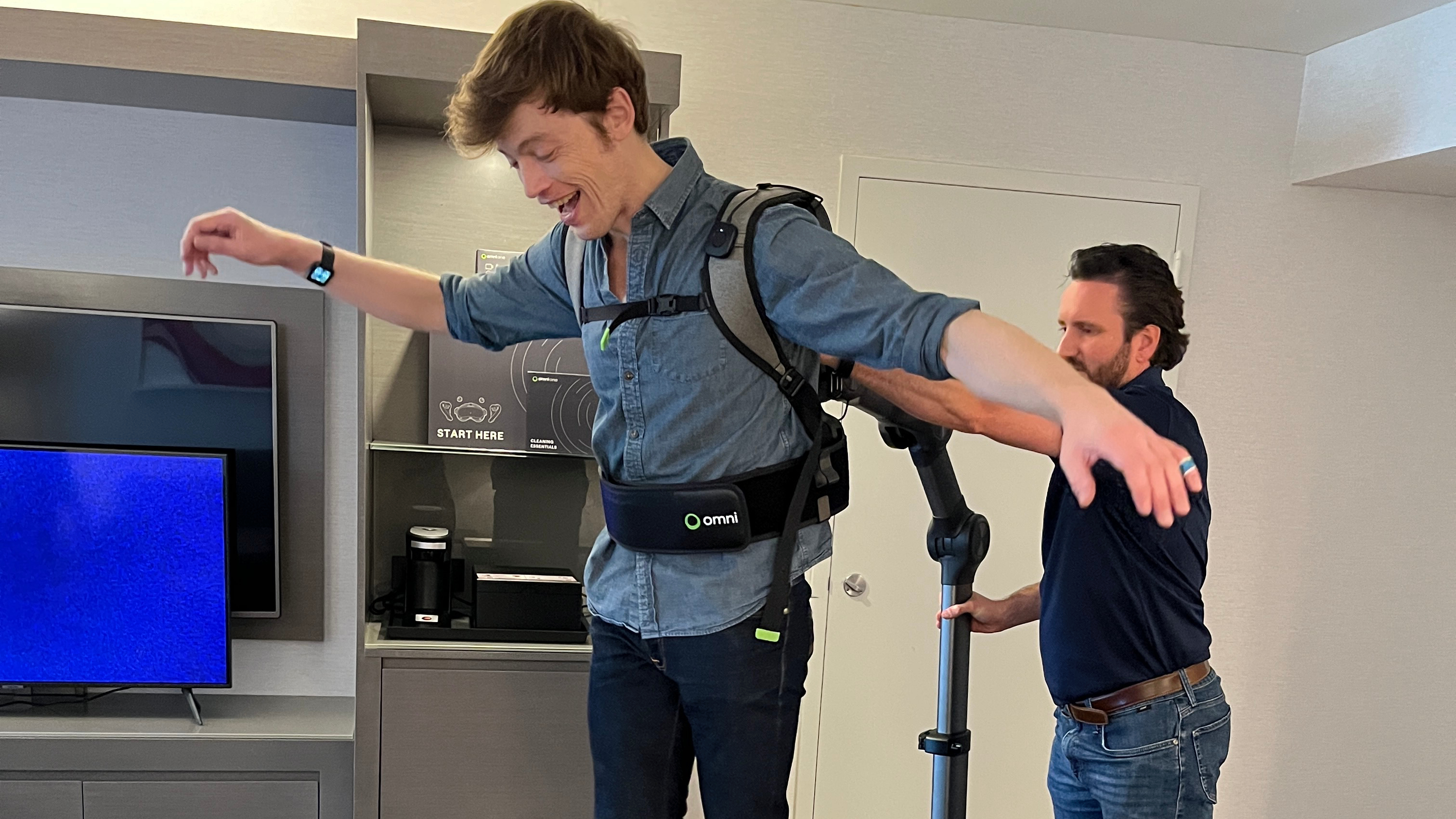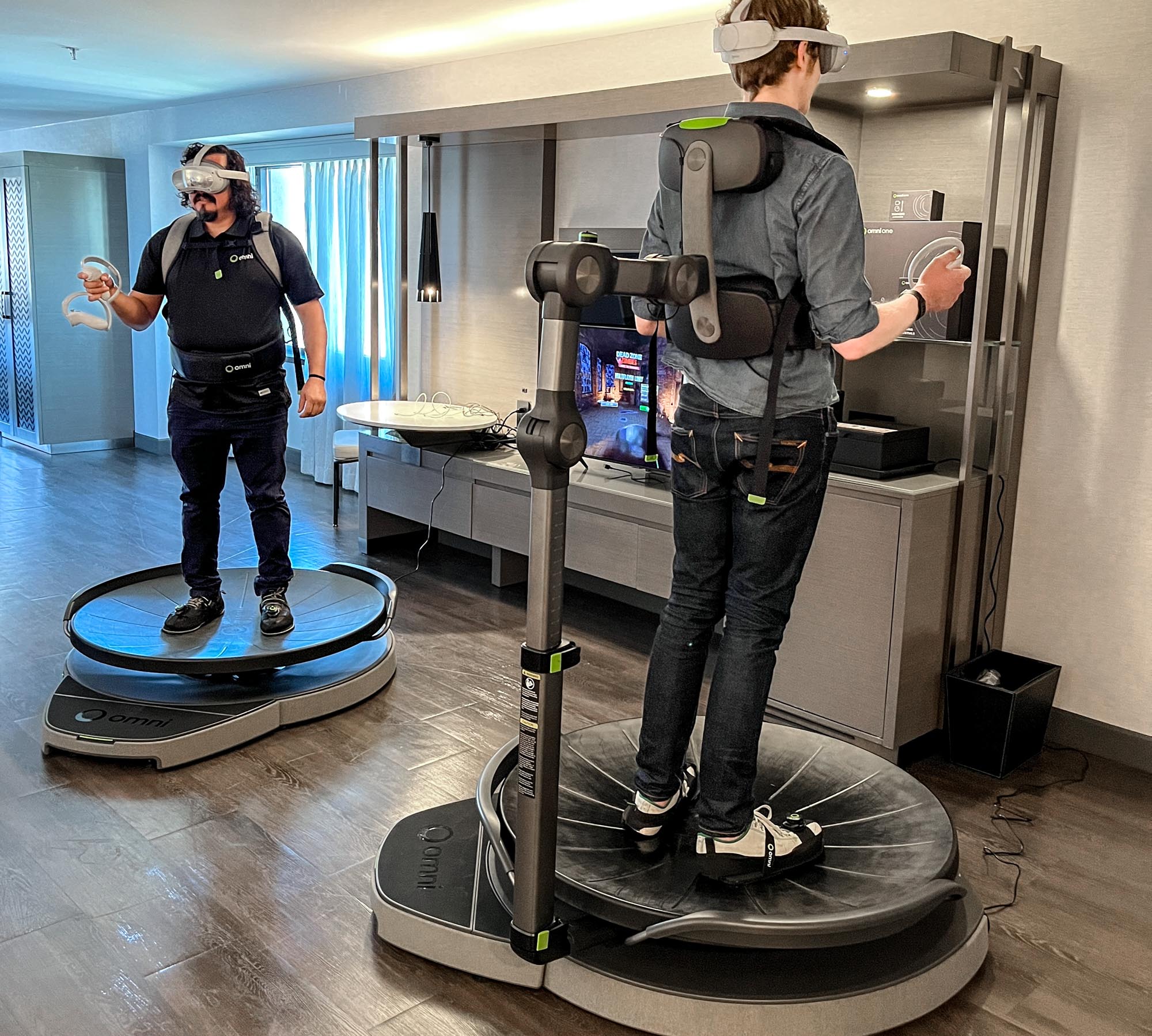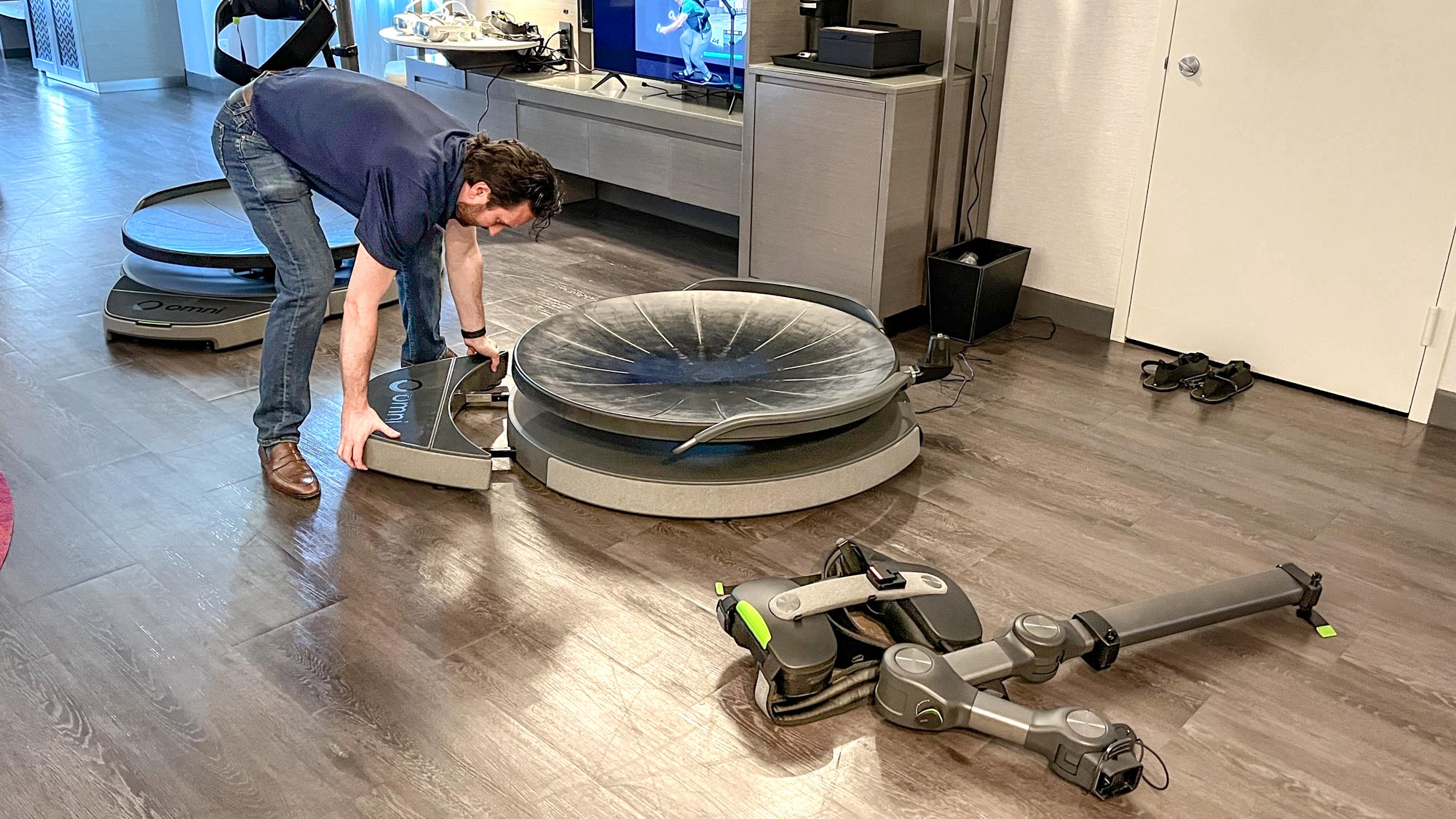I spent an hour in the Virtuix Omni One full-body VR rig — here's what it feels like
Full-body VR is coming to the home...for upwards of $2,500

I have strapped into a version of our full-body virtual reality future, and it takes some getting used to.
I’m talking about the Virtuix Omni One ($2,595), a new VR gaming platform that comes with a 360-degree walking treadmill and articulated support arm in addition to a VR headset. The arm extends off the treadmill to a vest and belt you strap yourself into, with the goal of giving you the ability to walk, run, crouch and jump in VR–without destroying your living room.
I was excited about this opportunity to try the Omni One because I’ve been following VR technology for over a decade, ever since the first Oculus Rift was Kickstarted back in 2012. Shortly thereafter Virtuix ran a successful Kickstarter for its first full-body VR platform, the Omni. Fast forward over a decade and the company is finally gearing up to a release an advanced version of that full-body VR kit that’s ready for home use.
It’s called the Omni One, and while the price of entry may be too high for some (there’s also a monthly payment plan available), Virtuix is hoping it can get enough units sold to build a healthy ecosystem for its proprietary VR game platform.
This isn't just a treadmill—it's a VR platform

That’s right, the Omni One doesn’t run on the same platform as competitors like the Meta Quest 3. While you can plug this full-body VR gaming rig into a PC to use it with Steam VR games, it’s designed to work best with the games on the Omni One store. Virtuix claims it will have 50+ games available on the Omni One store at launch, including multiplayer games specifically geared for the kind of full-body movement supported by the Omni One.
The big question is, will what’s available on the Omni One store at launch be compelling enough to convince people to buy into a nearly $3k VR device? I only had a chance to play one multiplayer game during my Omni One demo, so I can’t say much about the quality of the software on offer. The brief multiplayer match of a co-op zombie survival shooter I played with a Virtuix employee went well enough, even though I was slipping and sliding across the Omni One’s treadmill like a newborn calf after a bender. Thankfully, the Virtuix team dialed down the difficulty enough that I was able to stumble through a match on the Omni One without getting nauseous or breaking an ankle.
And I have to be honest with you, that was a real concern for me during my brief introduction to the Omni One. Company founder Jan Goetgeluk kindly hopped in first to show me how to put on the special shoe wraps and strap on the vest, and he makes running and jumping on the Omni One treadmill look easy. But gentle reader, believe me it is anything but.
Oh it’s easy enough to wrap the special Omni One overshoes with foot trackers around your shoes and step onto the treadmill, which feels like a giant concave plastic disc. But once you strap into the harness, put on the custom Pico 4 headset and grab the controllers, things get dicey fast. Personally, I found that learning to walk on a plastic dish while strapped to an articulated arm was a little awkward. Stepping forward is easy enough, but learning to lean back and sort of shuffle to walk backwards without falling took me a good twenty minutes. Forget about running and jumping—passionate enthusiasts could likely manage it, but as a newbie who’s pushing 40 I had no intention of tangling my ankles and knees up in a death-knot trying to run in place.
This seems like a great way to break an ankle.
Honestly, that’s one of my biggest takeaways from spending an hour in the Virtuix Omni One: This seems like a great way to break an ankle. But I’m on the tall side (6’4”) so my legs are a bit long for the device, and I’m pushing the envelope of how large a person it can support—the One supports users from 4’4” to 6’4” and up to 250 pounds of bodyweight. Smaller, younger users will likely be more comfortable using it and have more fun moving in VR using the treadmill, which does work well enough once you get the hang of it.
Outlook

After using one for an hour, I wouldn’t say I’m hooked—but I am intrigued. There’s a seemingly endless horizon of experiences and inputs to experiment with now that competent VR headsets are widely available, and I’m eager to see what canny developers can do with this technology.
But personally, I think I’m going to be holding off on dropping a paycheck or two on the Omni One until I see what software is available and how many people are playing it. The fact that Virtuix has iterated on this tech until you can have one shipped to your home and set up in minutes (the Omni One is fast to assemble, tool-free, and sports built-in wheels for easy transport) is amazing—now it just needs great software and a healthy community to help it take off.
More from Tom's Guide
Sign up to get the BEST of Tom's Guide direct to your inbox.
Get instant access to breaking news, the hottest reviews, great deals and helpful tips.

Alex Wawro is a lifelong tech and games enthusiast with more than a decade of experience covering both for outlets like Game Developer, Black Hat, and PC World magazine. A lifelong PC builder, he currently serves as a senior editor at Tom's Guide covering all things computing, from laptops and desktops to keyboards and mice.

